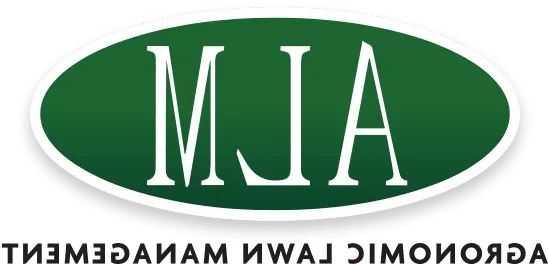What Are Herbicides and How Do They Work?

Truth be told, there is a safe and unsafe way to use everything. Herbicides are safe and effective when used according to label instructions. That’s why we’ve made it a priority to conduct ongoing training with our lawn care specialists in Chesapeake Area – so you can trust that every member of our team is highly qualified to use these products around your home.
We carefully consider and research every product before we decide to put it on your lawn. Our lawn care treatments are always family-friendly and they are safe for pets, too!
We are committed to this process because we care about the health of your family and the health of the environment. Your loved ones will always be in good hands with ALM.
Jump to a section:
What Is a Herbicide?
A herbicide is a substance that is used to kill plants. Herbicides work by inhibiting the growth of the plant, causing it to die. There are many different types of herbicides, and each one works in a different way.
Types of Herbicides
There are many options when it comes to herbicides, and just as many concerns and worries about side effects. When applied properly by your Agronomic Lawn Management team at a designated prescribed dosage, herbicides pose no risk to your or your family. Here are 4 noteworthy herbicide products and their facts.
Prodiamine
Prodiamine is a pre-emergent herbicide that is used for weed control. It is activated by water and is most effective on annual grassy and certain broadleaf weeds. The most recent SDS (safety data sheet) for Prodiamine does NOT list reproductive or developmental side effects. However, an old SDS did. The old SDS stated, "Fetal toxicity at high dose levels (rats); developmental and maternal toxicity observed at 1g/kg/day." During the test mentioned in the SDS, rats were given 1 gram of prodiamine per kilogram of body weight per day. At Agronomic Lawn Management, we use this product only twice per year and well under this toxicity rate. Even if we sprayed at the toxic rate every day (which we don't), you would have to lick your entire yard to receive that amount.
Triclopyr
Triclopyr is an organic compound used as a herbicide that targets broadleaf weeds. It is found in many common products such as Weed-B-Gone and ORTHO Max. Triclopyr breaks down in soil with a half-life of around 60 days. Products containing the active ingredient of Triclopyr are safe for your lawn as long as it as applied at the proper dose.
2,4-D
Formally called 2,4-Dichlorophenoxyacetic acid, this organic compound also targets broadleaf weeds. 2,4-D kills weeds by altering the way certain cells grow. In turn, this keeps 2,4-D from killing grass or other wanted plants. We always apply 2,4-D at the proper dose, which is safe for your lawn and loved ones.
Glyphosate
This organophosphorus compound is a broad-spectrum weed-killer. Glyphosate is well-known for being the active ingredient in RoundUp. When administered at the proper dose, Glyphosate has a low toxicity level and is safe to use on your lawn.
Are Herbicides Safe to Use?
The herbicides we use are safe to use on your lawn. It is a common misconception to think that properly-applied products will cause damage to you or your lawn. “Toxicity level” refers to the amount of product that needs to be applied for the product to be determined as toxic. We always apply products well below their toxicity level.
Additionally, the products we use are different from dangerous ones you may have heard of, like Agent Orange. Agent Orange, made from both 2,4-D and 2,4,5-T was speculated to be the cause behind various diseases and disorders. However, it was found that Agent Orange was contaminated with dioxin made during the synthesis of 2,4,5-T. Dioxin was found to be the cause of the diseases and disorders, and the creation of 2,4,5-T consequently banned.
In other words, while an herbicide name like 2,4-D might sound scary, it has no dangerous history and remains unrelated to Agent Orange incidents. This weed growth-altering herbicide is always applied at a proper dose by our professionals and safe to use on your lawn.
Does Organic Mean Safe?
Another common misconception regarding product safety involves terms like organic, synthetic, and natural. These buzzwords really don't mean anything as it pertains to safety/toxicity. Just because something is labeled as “organic” or “natural” does not mean it’s safer than a product that isn’t labeled that way.
Here at Agronomic Lawn Management, we believe in full transparency when it comes to lawn care and herbicides. In order to better understand the safety of our herbicide offerings, let’s take a look at their LD50 levels when compared to common household products. LD50 stands for lethal dose 50% and represents the amount of substance in mg chemical/kg body weight required to kill 50% of a test population. The lower the LD50, the more toxic the chemical.
Sources: UF Herbicides: How Toxic Are They; UT Institute of AgriCulture Safety of Herbicides
As you can see, our herbicide offerings have incredibly high LD50 ratings. That means that to cause any harm to you or your family, extremely large amounts of our herbicides-amounts way above any we’d apply to your lawn-would have to be ingested. In fact, each household product that ranks higher than our herbicides above pose greater risks to your family.
We aren't hiding anything that we do or apply. Safety is our top priority and we will always put the health of you and your family above anything else. You can rely on our family-friendly treatments to make your lawn beautiful while keeping your family safe at the same time. If you are in need of lawn care in Chesapeake, Norfolk, Virginia Beach, or surrounding areas, call ALM today!
